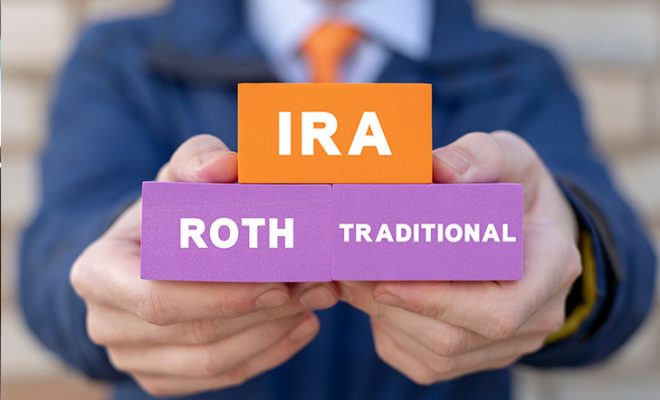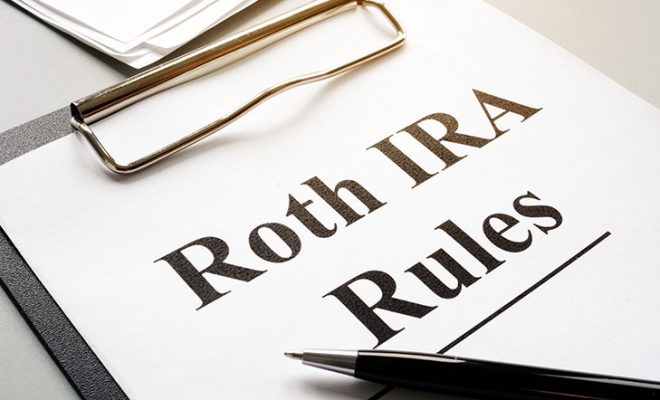6 Surprising Facts People May Not Know About Roth IRAs

The Individual Retirement Account (IRA) is one of the most popular retirement savings vehicles. The account can be opened with a credit union, bank, insurance company, or broker. Although often compared to a 401(k) retirement account, an IRA works differently. Firstly, it is not employer-sponsored and does not have matching contributions from the company. Secondly, the contribution limits for an IRA are different from a 401(k). Lastly, the IRA has income limits that qualify you to contribute to it.
A financial advisor can help you choose between a Roth and Traditional IRA. However, before you do so, read below to learn more about Roth IRAs and explore some facts about the retirement account you may not be aware of.
What is a Roth IRA?
A Roth IRA is a type of Individual Retirement Account that allows you to make contributions with your after-tax dollars. This means that you do not get an immediate tax deduction for your contributions, but your withdrawals are generally tax-free in retirement as long as you meet specific requirements. Roth IRAs offer a wide range of investment options, including stocks, bonds, mutual funds, and Exchange-Traded Funds (ETFs), among others. The specific options available depend on the financial institution where you open your Roth IRA. The Roth IRA allows you to make annual contributions, the limits for which are set by the Internal Revenue Service (IRS). As of 2023, the contribution limit for individuals under the age of 50 is $6,500, while those aged 50 and older can contribute an additional catch-up contribution of $1,000, for a total of $7,500.
You should have earned income to contribute to a Roth IRA. Individuals who do not have an earned income in a year cannot contribute to a Roth IRA. In addition, you must fall within the income limits. Based on these limits, you can determine whether you can make the maximum contribution or if your contribution is reduced or phased out.
Here are the income limits for the year 2023:
| Filing status | The income range for 2023 | The maximum annual contribution for 2023 |
| Single, head of household, or married, filing separately if you did not live with your spouse during the year
|
Less than $138,000 | $6,500 ($7,500 if 50 or older) |
| $138,000 to $153,000 | Reduced contribution | |
| $153,000 or more | No contribution | |
| Married, filing jointly, or qualifying widow(er) | Less than $218,000 | $6,500 ($7,500 if 50 or older) |
| More than $218,000, but less than $228,000 | Reduced contribution | |
| $228,000 or higher | No contribution | |
| Married, filing separately, if you lived with your spouse at any time during the year | Less than $10,000 | Reduced contribution |
| $10,000 or higher | No contribution |
6 Roth IRA facts that you may not know
Roth IRAs possess many more features and characteristics that you may not have heard of. Let’s explore some unknown Roth IRA account information that can help you use the account to its maximum potential.
1. You can open more than one Roth IRA
There is no restriction on the number of Roth IRAs you can keep. You can contribute to more than two IRAs at the same time. However, the only thing to remember here is that the combined contribution for all your Roth IRAs should not be more than the prescribed limit set by the IRS in the concerned year. For example, consider a scenario where you have two IRAs. If you contribute $3,000 to the first account this year, you will only be able to contribute another $3500 to the second IRA if you are under 50 or $4500 if you are 50 or older in 2023. Since the limits can differ for each year, it is advised to stay up to date with the latest information on contributions.
Although the Roth IRA has a restriction on the total contribution, you can still benefit from opening multiple accounts. You can have various Roth IRAs with different financial institutions. For example, you might have one Roth IRA with a bank and another with a brokerage firm. This can provide you with the flexibility to choose different investment options or take advantage of services offered by different providers. You may also choose to maintain both Roth and Traditional IRAs to take advantage of different tax treatments and benefits. Additionally, you can contribute to a Roth IRA and a SIMPLE IRA as long as you meet the eligibility requirements for each account.
In some cases, you may also end up with two IRAs when you change your job. If you have an old 401(k) or other employer-sponsored retirement account from a previous job, you can roll it over into an IRA. In this case, you may have multiple IRAs, including both Roth and Traditional IRAs, depending on how you choose to allocate your funds. If your income exceeds the limits prescribed by the IRS, you may not be eligible to contribute directly to a Roth IRA. In such cases, you can still contribute to a Traditional IRA, which may offer tax-deductible contributions. If you inherit an IRA from a family member or loved one, you will have a separate IRA in addition to any existing IRAs you already have.
2. You can use a Roth IRA for financial goals other than retirement
While IRA’s name itself suggests that it is primarily a retirement account, you can use the instrument for other purposes. A lot of people use their Roth IRA as a backup emergency fund. In the unlikely event of exhausting the primary emergency fund, a Roth IRA can bail you out. Having said that, it is advisable to always have a separate emergency fund.
In addition to this, you can also use your Roth IRA for other specific savings goals, such as higher education expenses for your children, purchasing a first home, or covering a significant medical expense. Roth IRA contributions can be withdrawn tax-free and penalty-free, which makes them ideal for paying for the college expenses of your children. If you have not saved enough for your children’s education or your 529 account falls short, you can depend on your Roth IRA to some extent. Roth IRA contributions can also be withdrawn tax-free and penalty-free for a first-time home purchase and medical expenses without any hassles.
However, it is essential to consider the long-term impact of using your Roth IRA funds for non-retirement purposes. Withdrawing contributions means reducing the amount of money available for retirement. This can potentially hinder the growth potential of your investments, which can prove to be problematic in retirement as you would have minimal opportunities to earn as you grow older. Therefore, it is strongly recommended to prioritize retirement savings within your Roth IRA and save for other goals unless you find yourself in an emergency that cannot be ignored.
SPONSORED WISERADVISOR
3. An IRA can be opened by a minor
Another critical thing to know about Roth IRA is that it can be opened by a minor. You can open a Roth IRA for anyone, irrespective of age, as long as they have an earned income. Therefore, children who have earned income, such as from part-time jobs or self-employment, are eligible to contribute to an IRA. However, a minor may need parental consent to open an IRA.
Starting a Roth IRA for your child can have several benefits. Time is one of the most significant advantages of investing. By opening a Roth IRA for your child, you give them a head start on saving for retirement. The power of compounding can significantly appreciate the value of their investments and allow them to save for their future. This money can later also be utilized for other goals, such as higher education, home purchase, travel, etc. As a parent or guardian, you can also contribute to your child’s IRA on their behalf, as long as the total contributions do not exceed their earned income for the year or the annual contribution limit.
A Roth IRA for a child can be an excellent way for minors to learn the value of investing and taking their finances seriously from a young age. They can understand the importance of long-term financial planning and be a part of the decision-making process about what happens to their money, instilling good financial habits early on.
4. A Roth IRA does not have any Required Minimum Distributions (RMDs)
Unlike Traditional IRAs, Roth IRAs do not have Required Minimum Distributions (RMDs) during the account owner’s lifetime. This means you can leave the funds in the account to grow tax-free for as long as you wish. RMD refers to the minimum amount of money that you must withdraw from your retirement account starting from a specific age. The IRS does not allow you to keep your funds in some accounts like the Traditional IRA, SIMPLE IRA, SEP IRA, etc., indefinitely. Presently, you must start taking withdrawals from the age of 72 or 73 if you turn 72 after December 31, 2022. However, Roth IRAs are not subjected to this rule. Starting in 2024, even beneficiaries of Roth IRAs are exempt from RMDs.
This means you or your loved ones inheriting the account can enjoy greater flexibility with regard to withdrawals from the account. You can choose when and how much to withdraw based on your financial needs and goals rather than being forced to take specific amounts according to a schedule. RMDs from Traditional IRAs can sometimes force individuals to withdraw more than they need for living expenses. With no RMDs in a Roth IRA, you can let your funds be in the account, ensuring a potential safety net for unforeseen expenses. Since you are not required to take distributions, your Roth IRA funds can continue to grow tax-free for a longer period. This extended growth potential can be advantageous for maximizing the account’s value and potentially leaving a larger inheritance to your beneficiaries.
RMDs from Traditional IRAs and other retirement accounts are typically subject to income taxes. However, without RMDs in a Roth IRA, you have more control over your taxable income during retirement. This can minimize your overall tax burden.
5. You can rollover your 401(k) to a Roth IRA
You can roll over your 401(k) to a Roth IRA if you feel you can gain more advantage from an IRA. This way, you can potentially benefit from tax-free withdrawals in retirement. Roth IRAs also have no RMDs during your lifetime, allowing you more flexibility in managing your retirement withdrawals. But it is crucial to consider the tax implications of this move. When you convert a Traditional 401(k) or Traditional IRA to a Roth IRA, you will owe income taxes on the pre-tax contributions and earnings that are being converted. This means you will have to pay taxes on the amount converted in the year of the conversion. It is essential to consider your circumstances, current and future tax brackets, retirement goals, etc., before converting your account. You must also check the availability of funds to pay immediate taxes that you will owe on the conversion. This can turn out to be a high bill, depending on the value of the conversion and how long you have been contributing to your old account.
6. A Roth IRA can be managed by a financial advisor
Roth IRAs can be managed accounts, allowing you to receive assistance from a financial advisor or broker in managing your investments within the IRA. You can provide written authorization to your financial advisor or broker, allowing them to make investment decisions and execute routine transactions on your behalf. The financial advisor of a managed IRA will actively monitor your investments, make adjustments as needed, and provide regular reports on the performance and activity within the account. Managed IRA accounts often involve a fee for the advisory services offered. The fee structure can vary depending on the financial advisor or brokerage firm, but it is commonly a flat fee based on a percentage of the Assets Under Management (AUM).
To conclude
Understanding the facts mentioned above about Roth IRAs can help you make informed decisions on how to use the account to your advantage. Apart from this, keeping track of your contributions and understanding the contribution limits that apply to each type of IRA is vital. It can also help to consult with a financial advisor for personalized guidance based on your specific circumstances so you can make informed decisions regarding your Roth IRA savings.
Use the free advisor match service to find a suitable financial advisor specializing in Roth IRAs in your area. Answer some simple questions about your financial needs, and our matching tool will connect you with 1-3 advisors who can best fulfill your financial requirements.
For further information on creating a suitable retirement plan for your unique financial requirements, visit Dash Investments or email me directly at dash@dashinvestments.com.
About Dash Investments
Dash Investments is privately owned by Jonathan Dash and is an independent investment advisory firm, managing private client accounts for individuals and families across America. As a Registered Investment Advisor (RIA) firm with the SEC, they are fiduciaries who put clients’ interests ahead of everything else.
Dash Investments offers a full range of investment advisory and financial services, which are tailored to each client’s unique needs providing institutional-caliber money management services that are based upon a solid, proven research approach. Additionally, each client receives comprehensive financial planning to ensure they are moving toward their financial goals.
CEO & Chief Investment Officer Jonathan Dash has been covered in major business publications such as Barron’s, The Wall Street Journal, and The New York Times as a leader in the investment industry with a track record of creating value for his firm’s clients.











